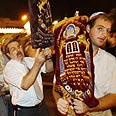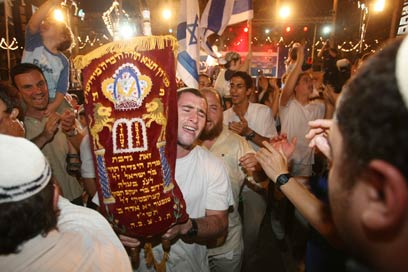
Shemini Atzeret & Simchat Torah
None
In Israel, both Shemini Atzeret and Simchat Torah fall on the 22nd of Tishrei (usually sometime in October), but outside of Israel, Shemini Atzeret is held on the 22nd and 23rd of Tishrei, with Simchat Torah falling on the second day.
Shemini Atzeret
Though celebrated right after Sukkot, Shemini Atzeret, meaning "the assembly of the eighth (day)", is a holiday unto itself and the Talmud teaches that Shemini Atzeret is a separate holiday, carrying six specific halachic issues.
Rabbinic tradition teaches that on this day God judges the world for water and rainfall for the upcoming year. Thus, special prayers asking for rain are recited on this day. The holiday is also said to highlight the special relationship God has with the Jewish people.
Simchat Torah
Simchat Torah, meaning "Joy of the Torah," marks the annual completion of all the weekly readings of the Torah. On this day, Jews gather in synagogues to read the last portion of the Torah, Deuteronomy 34, and then they proceed directly to Genesis 1, as a reminder that the Torah is a never-ending cycle.
Simchat Torah is the only day in which the Book of Deuteronomy it is read during evening service.

Hakafot (Photo: Gilad Kavalerchik)
Most Jewish communities have special Torah services marking the eve of Simchat Torah, entailing opening the synagogue's ark and carrying the Torah scrolls around the synagogue seven times in "hakafot" – circuits – while singing and dancing.
After the hakafot, three scrolls of the Torah are read. The last portion of the Book of Deuteronomy (33:1-34:12), is read from the first scroll, followed immediately by the first chapter (and part of the second) of the Book of Genesis (1:1-2:3), which is read from the second scroll.
After the portion of Genesis is read, the Maftir – conclusion of the Book of Numbers (29:35-30:1), is read from a third Torah scroll.










